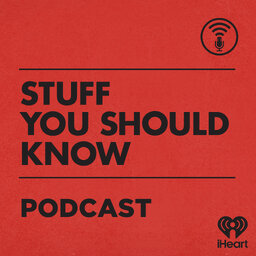How the Aurora Borealis and Aurora Australis Work
It wasn't too long ago that humans thought the polar lights were signs from the afterlife. Thanks to a 19th century Norwegian, we now understand that they are a fascinating interplay with Earth's magnetic field and wind from the sun.
Learn more about your ad-choices at https://www.iheartpodcastnetwork.com
 Stuff You Should Know
Stuff You Should Know


